As NATO celebrated its 75th anniversary in Washington, it faced a Russia that continues its brutal aggression against Ukraine, is waging hybrid warfare against Europe, is working hard to turn the non-Western world against the West, and is now developing a new Asia strategy.
China is the anchor of Vladimir Putin’s Asia strategy. Since China stepped in to support Russia after the annexation of Crimea and the outbreak of the war in the Donbas in 2014, Moscow has become increasingly reliant on Beijing. This dependence has grown since Russia’s full-scale invasion of Ukraine in 2022. China has reiterated the Russian narrative blaming NATO for the outbreak of the war and, through its exports of goods that contribute to Russia’s military-industrial base, it enables Russia to continue the war.
China is not only Russia’s lifeline in this conflict but both countries are allied in calling for a multipolar “post-Western” world that will move away from U.S. domination. They seek to build an axis of authoritarians that appeals to a receptive group of countries in the Global South. China is Russia’s top trading partner, although it is much more important for Russia economically than vice versa. Putin benefits from the reality that Xi Jinping does not want Russia to lose the war, because he fears that a post-Putin Russia could be run by a leader who might reconsider Russia’s antagonistic relationship with the West and would improve ties with the United States and Europe—to China’s detriment.
The increasingly close relationship between Moscow and Beijing—despite its asymmetries and differences of interest between the two powers—represents a danger to NATO because it strengthens Russia’s ability to continue its aggression in Ukraine, further threatening European security.
A new axis of resistance
Putin has, in the past two years, created an “axis of resistance” of countries that facilitate his aggression—China, Iran, North Korea, and Russia. Iran provides drones that Russia uses in Ukraine, and Moscow appears to be supplying Tehran with advanced weapons, probably accepting that Iran will become a nuclear weapons state. Iranian support of Hamas and Hezbollah destabilizes the Middle East and also threatens NATO countries since its actions could lead to a wider war with the West.
Putin’s recent visit to Pyongyang showcased North Korea’s growing role in his pivot to Asia and the two countries’ increasing ability to disrupt both Asian and European security. Putin received a lavish reception in Pyongyang and signed a bilateral strategic partnership agreement that includes a mutual defense provision that echoes NATO’s Article 5 clause. Putin declared that Moscow has nothing to lose and is prepared to go “to the end” to achieve its goals in Ukraine. His visit serves as a reminder that North Korea not only enables Russia to continue its brutal war, but Moscow may enable Pyongyang to strike out against a close Western ally, South Korea, in a move that could destabilize both Asia and Europe.
Thus, European and Asian security have become increasingly interconnected since Russia invaded Ukraine in 2022. Putin, enraged by increased Western military and financial support for Ukraine, has again made nuclear threats against countries supporting Ukraine. He has announced that Russia will develop a new class of intermediate-range nuclear weapons and may deploy them near NATO countries. He warns that, if Russia loses the war, the 1,000-year-old Russian state will collapse. This is, he says, an existential war for Russia’s survival. The West should, he insists, accept his latest peace plan. This would involve Ukraine eschewing NATO membership and withdrawing its troops from and recognizing the four territories annexed by Russia in September 2022, none of which Russia fully controls, as Russian territory.
Russia’s continuing military assault on Ukraine comes amidst an unprecedented rise in hybrid cyberattacks and acts of sabotage in Europe, including arson at a factory site belonging to a German arms and ammunition maker. Russian espionage activities are also on the rise. And while this is taking place, Moscow is reaching out to what it calls the “global majority” to present itself as the leader of the anti-imperialist world, claiming that it has no colonial past, and exhorting the Global South to follow it in resisting American “hegemony” and creating a new “democratic,” multipolar international order.
An unmistakable Asian dimension
The Washington summit was attended by NATO members and by four U.S. Asian allies—Australia, New Zealand, Japan, and South Korea. Given Putin’s recent trips to North Korea and Vietnam, it is becoming increasingly evident that the war in Ukraine and Russia’s threat to European security have acquired an important Asian dimension. North Korea publicly supports Russia’s war with Ukraine. Vietnam—where Putin traveled after Pyongyang—is neutral, but, like most of the Global South, has not imposed any sanctions on Russia. Vietnam has signed a number of defense and security cooperation agreements with the United States. Yet Vietnamese officials vowed to increase bilateral defense cooperation during Putin’s visit to Hanoi.
Reacting to the United States and European countries allowing Ukraine to use their weapons to strike into Russian territory, Putin warned that Russia would supply weapons to “regions of the world where strikes can be made against sensitive targets” among Ukraine’s allies. One can speculate about which countries that might involve, but North Korea is a prime candidate. Since Putin’s visit to Pyongyang, South Korea has said that it is contemplating providing Ukraine with weapons for the first time since the 2022 Russian invasion.
As U.S. Secretary of State Antony Blinken recently said, “What’s happening in the Indo Pacific space has real implications for our Allies. And there’s a recognition of that, and that recognition is turning into concrete and strong partnerships. [Japanese] Prime Minister [Fumio] Kishida may have said this best in the context of Ukraine when he said what’s happening in Ukraine today, may well be happening in East Asia tomorrow.”
At the Washington summit, the North Atlantic Council held a separate meeting with the four Indo-Pacific partners (IPP) and agreed to increase their cooperation in supporting Ukraine, cyber defense, countering disinformation and holding regular conversations about Russia’s ties with the Democratic People’s Republic of Korea: “By supporting Ukraine, increasing defense spending, and through the development of individual NATO partnerships with IPP countries, Indo-Pacific partners are strongly investing in global security.”
Dealing with new realities
The NATO summit focused on the war in Ukraine and on the threats emanating from Russia’s aggression. President Volodymyr Zelenskyy’s presence highlighted the determination of the expanded alliance to counter Russia and support Ukraine—short of an offer of NATO membership. But the presence of Asian allies—particularly Japan and South Korea, who are regularly targeted by joint Russian-Chinese naval and air patrols—signaled the determination to counter Russia’s disruptive actions.
Last year, French President Emmanuel Macron reportedly vetoed the opening of a NATO liaison office in Tokyo. Perhaps it is time for NATO to revisit its Asian ties. European and Asian security cannot be decoupled. Russia’s war against Ukraine continues thanks to artillery and ballistic missiles from North Korea and Chinese exports of machine tools, microelectronics, and other technologies that are critical to sustaining the military hardware that Moscow is using to carry out its war. The alliance’s Washington Summit Declaration notes, for the first time, that China has become a “decisive enabler” of Russia’s war.
If NATO wants to ensure that Russia does not win this war, it will have to confront and deal with the new Asian realities. This will involve closer military, economic, and political cooperation with the West’s Asian allies on a number of levels, and it should also be part of a broader Western effort to counter Russia’s moves. The G7 and the European Union should be part of this effort. The NATO+4 format (with Japan, South Korea, Australia, and New Zealand) could be upgraded and strengthened to meet the new challenges.
American advocates who argue that the United States should focus on the Indo-Pacific threats it faces, and let the Europeans take care of the threats they face—primarily Russia and its war in Ukraine—are missing the point. The threats from and to Asia and the threats to and from Europe cannot be decoupled. They are part of a new nexus of authoritarian and revisionist states seeking to upend the current world order.

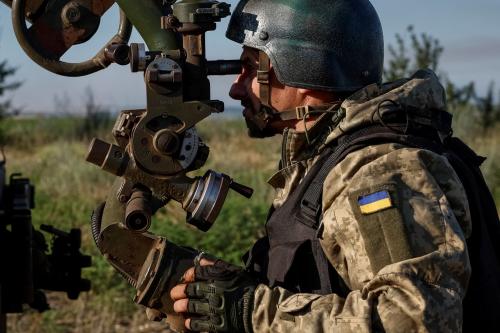
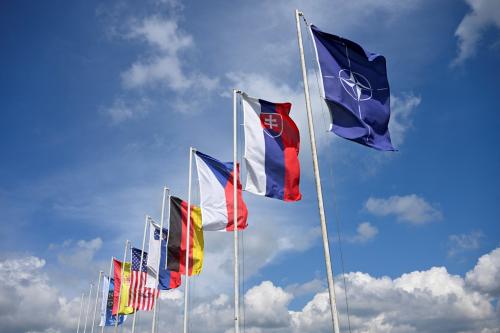
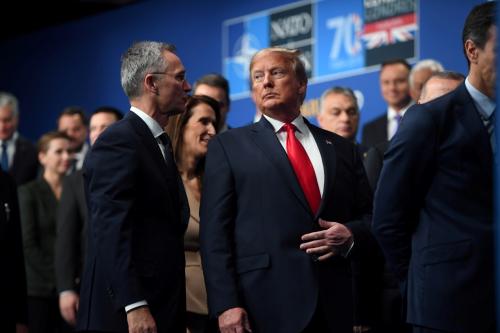
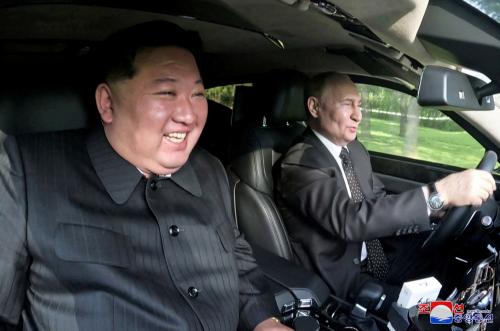
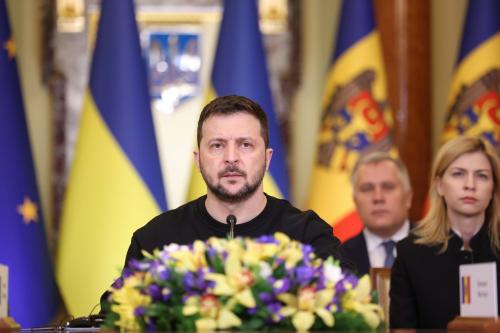
Commentary
Russia’s disruptive actions show that European and Asian security cannot be decoupled
July 15, 2024